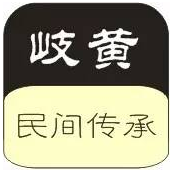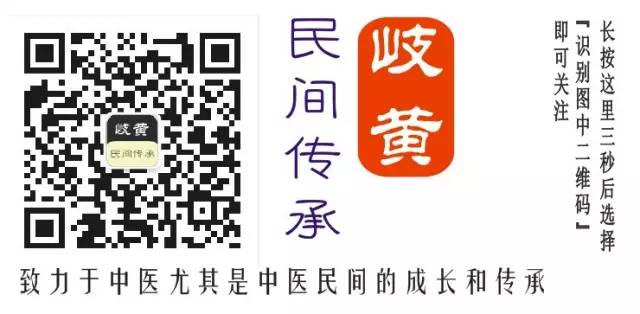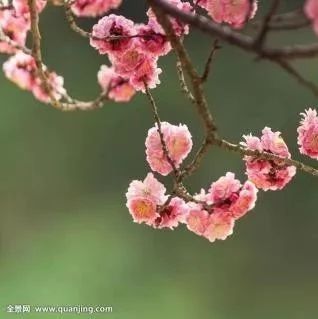

『Most Popular TCM Public Account』
『The Most Popular TCM Public Account』
Dedicated to the growth and inheritance of Traditional Chinese Medicine, especially folk TCM
Accompanying TCM practitioners every day
Issue 708

Author: Kao Xiliang
Shandong University of Traditional Chinese Medicine Affiliated Hospital
Editor / Zhao Xin ⊙ Proofreader / Duan Rui
Long TCM Novel“The Unmatched Ice of TCM” Part One: “The Ancient Tomb of Taibai” (Click to read automatically) can be viewed in historical articles.Follow Qihuang Folk Inheritance (Public Account: qhmjcc) for healthy and happy reading.

Recurrent oral ulcers are a common clinical condition, categorized in Traditional Chinese Medicine (TCM) as “口疮 (kǒu chuāng)” (oral sores), “口破 (kǒu pò)” (oral breaks), “口疡 (kǒu yáng)” (oral ulcers), “口糜 (kǒu mí)” (oral erosion), and “口疳 (kǒu gān)” (oral canker). The author believes that this condition is often caused by dysfunction of the internal organs, leading to damp-heat accumulation and toxicity, either hidden within or externally contracted damp toxicity, with damp-heat and turbid toxins flowing through the meridians and fire toxins attacking upward. As stated in the “Treatise on the Origins and Symptoms of Various Diseases – Symptoms of the Mouth and Tongue”: “The heart qi connects to the tongue… the spleen qi connects to the mouth. When the internal organs are overheated, the heat invades the heart and spleen, causing qi to surge to the mouth and tongue, resulting in sores. ” After prolonged illness, damp-heat and turbid toxins consume qi and injure yin, leading to a mixed pattern of deficiency and excess. Therefore, treatment should combine both attack and tonification.
Ms. Jia, 57 years old, presented on August 19, 2010, with a history of “recurrent oral ulcers for over 20 years, worsening for 2 years.” The patient reported that she had experienced oral ulcers since her youth, characterized by several small ulcers in the oral cavity. Despite treatment with both TCM and Western medicine over the decades, the condition remained recurrent. Before menopause, the episodes were periodic, often occurring before and after menstruation, generally once a month, and worsened with fatigue. Since menopause 8 years ago, the oral ulcers have become more frequent and no longer periodic, appearing alternately with severe pain affecting her ability to eat. In the last 2 years, the ulcers have worsened significantly, with extensive erosion in the mouth and intolerable pain. Symptoms included: ulcers throughout the oral cavity, with lesions on the buccal mucosa, hard palate, tongue, and lips, the smallest measuring 2mm x 3mm and the largest 10mm x 6mm, some merging into larger areas, white in color with obvious congested edges, and pain worsening with mouth opening and speech, accompanied by foul breath and fatigue. The patient noted that a few days before the worsening of the oral ulcers, she experienced chest tightness and had bowel movements every two days with normal color and consistency. Physical examination revealed redness and erosion in the throat. The tongue was small and red with tooth marks on the edges, the coating was thick and yellow, and the pulse was thin, rapid, and weak. The Western diagnosis was recurrent oral ulcers, while the TCM diagnosis was oral sores, with a pattern of damp-heat toxicity and qi deficiency with turbid overflow. Treatment was aimed at clearing heat and detoxifying, promoting dampness and transforming turbidity, and tonifying qi to expel toxins. The prescription included: Da Qing Ye (Isatis Leaf) 20g, Yi Yi Ren (Job’s Tears) 30g, Tu Fu Ling (Smilax) 30g, Sheng Gan Cao (Raw Licorice) 20g, Zhi Gan Cao (Honey-fried Licorice) 10g, Huang Qi (Astragalus) 45g, Dang Gui (Angelica Sinensis) 10g, Bai Shao (White Peony) 30g, Bai Ji (Bletilla) 15g. Four doses were prepared, decocted in water to yield 400ml, taken in two doses, morning and evening.
After four doses, the patient reported a significant relief in oral ulcer pain, with no new ulcerations appearing, although some pain persisted during eating. The prescription was continued for another 8 doses. The patient later reported no oral ulcers, with all previous lesions healed and no new ulcers. Follow-up to date shows only one recurrence, and she was advised to continue using the original formula, which remained effective.
Comment: The patient’s condition is characterized by damp-heat toxicity accumulation and qi deficiency unable to expel toxins. The patient has significant damp-heat internally, leading to toxin formation, which follows the spleen meridian to the oral cavity, scorching qi and blood, and corrupting the mucous membranes, resulting in oral ulcers. The presence of damp-heat toxicity also explains the foul breath; the consumption of vital qi leads to fatigue, a small tongue, and tooth marks on the edges. The thick yellow coating and thin, rapid, weak pulse are indicative of damp-heat and qi deficiency. In the formula, Da Qing Ye and Sheng Gan Cao clear heat and detoxify. Due to the unique location of the oral ulcers (the mouth is connected to the external environment and is susceptible to viral infections), Da Qing Ye’s antiviral properties can address the root cause of the disease. Yi Yi Ren and Tu Fu Ling clear heat, promote dampness, and transform turbidity. Sheng Gan Cao and Huang Qi tonify qi and strengthen the middle. Sheng Huang Qi, which is sweet in taste and neutral or slightly cool in nature, is known for “nourishing blood, generating muscle, expelling pus, and is a holy medicine for sores and abscesses.” The heavy use of Sheng Huang Qi not only tonifies the deficiency of the internal organs but also helps to expel stagnation, and can assist in expelling toxins and generating muscle to close wounds, working synergistically with Bai Ji to promote hemostasis, reduce swelling, and facilitate healing of the ulcerated areas. When paired with Dang Gui, it forms a blood-nourishing formula, benefiting qi, invigorating blood, and nourishing blood. The combination of Bai Shao and Gan Cao forms the Shao Yao Gan Cao Tang, which nourishes yin and alleviates pain. The entire formula directly addresses the pathophysiology of the disease, hence its effectiveness. The prescription can be adjusted flexibly according to the patient’s condition, and attention should be paid to the dosage of the herbs. For example, if the heat toxin is severe, the dosage of Sheng Gan Cao should be greater than that of Zhi Gan Cao; if the primary issue is qi deficiency in the middle jiao, a 1:1 ratio of Sheng and Zhi Gan Cao can be used, or a heavier dose of Zhi Gan Cao can be applied, as it has the function of tonifying the middle and benefiting qi; Shao Yao Gan Cao Tang should be used routinely, as it alleviates pain and promotes the recovery of the mucosa. Huang Qi should be used in larger quantities, at least 45g, as modern pharmacological studies have found that Huang Qi can improve the deficiency of T cell subgroups in patients.
|
I This article is excerpted from “China Traditional Chinese Medicine News”, Issue 3440, 2010..I Copyright belongs to the relevant rights holder. If there is any improper use, please contact us for immediate deletion.I Submission email: [email protected]I Consultation and cooperation:WeChat ID: lianshangpuying. I Warning: This content is for the purpose of popularizing TCM knowledge and is not intended as a prescription. Please consult a physician for differential diagnosis and use.. |


